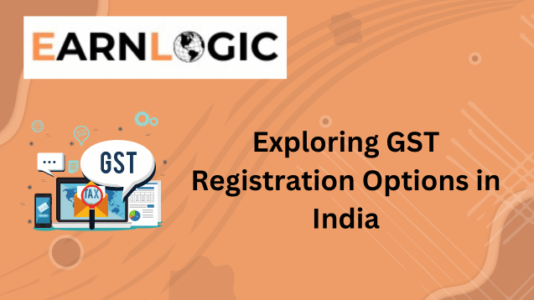Introduction
Goods and Services Tax (GST) has revolutionized India’s taxation system, introducing various registration types to accommodate diverse business needs. This article explores the different GST registration options available, helping businesses make informed decisions about their tax compliance strategies.
The main types of GST registration include:
- Regular Registration: The most common type for businesses above the turnover threshold.
- Composition Scheme: A simplified option for small businesses with lower tax rates.
- Non-Resident Taxable Person Registration: For foreign entities conducting temporary business in India.
- Casual Taxable Person Registration: For businesses operating temporarily in a different state.
- Input Service Distributor (ISD) Registration: Allows distribution of input tax credits across branches.
- Tax Deductor at Source (TDS) Registration: For government bodies and specified organizations.
- Tax Collector at Source (TCS) Registration: Mandatory for e-commerce operators.
- United Nations Body Registration: Special type for UN organizations and embassies.
Who Needs to Register for GST?
GST registration is mandatory for:
- Businesses with an aggregate turnover exceeding the prescribed threshold limit (Rs. 40 lakhs for most states, Rs. 20 lakhs for special category states).
- Businesses engaged in interstate supply of goods or services.
- Casual taxable persons or non-resident taxable persons.
- Agents of a supplier & Input service distributors.
- E-commerce operators and aggregators.
Eligibility Criteria for GST Registration
To register for GST in India, businesses and individuals must meet the following criteria:
- Turnover exceeds the threshold limit (as mentioned above).
- Intending to start a new business that will exceed the threshold limit.
- Supplying goods or services through e-commerce platforms.
- Required to pay tax under reverse charge mechanism.
- Non-resident taxable person making taxable supply in India.
Types of GST Registration
There are different types of GST registration based on the nature of business and transactions:
- Regular GST registration: For most businesses with a turnover exceeding the threshold limit.
- Composition scheme registration: For small businesses opting for a simplified compliance structure.
- Non-resident taxable person registration: For non-resident entities supplying goods/services in India.
- Casual taxable person registration: For those making occasional taxable supplies in India.
Benefits of GST Registration
Registering for GST offers several benefits to businesses:
- Legally recognized as a supplier of goods/services.
- Ability to collect GST from customers and pass on the input tax credit benefits.
- Access to a wide market across India without any barriers.
- Eligibility to claim input tax credit on purchases.
- Compliance with tax regulations, avoiding penalties and legal issues.
GST Registration Process
The process of GST registration involves the following steps:
- Preparation: Gather necessary documents and information.
- Application: Fill out the GST registration application online on the GST portal.
- Verification: Documents are verified by the GST authorities.
- Approval: GST registration certificate issued upon successful verification.
- Post-registration: Compliance with GST regulations, filing of returns, and maintenance of records.
Conclusion:
The variety of GST registration types demonstrates the Indian government’s effort to create a flexible tax system that accommodates different business models and scenarios. Choosing the right registration type is crucial for businesses to ensure compliance, optimise tax liabilities, and leverage benefits specific to their operations.




